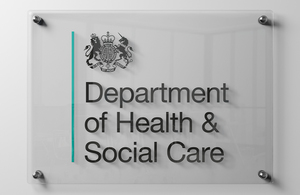New action to reduce sepsis
Health Secretary Jeremy Hunt has announced further measures to tackle sepsis, involving the NHS, government and national health bodies.

Each year, sepsis claims around 31,000 lives and costs the NHS in England about £2 billion. There are around 1,000 cases a year for children under 5.
The aim is to make tackling sepsis as important to the NHS as C. difficile and MRSA, where rates have virtually halved since 2010. It is estimated that 11,000 lives and £160 million could be saved every year through better diagnosis and treatment.
Plans include an audit of practice in every GP surgery in England by March 2015, and a new tool for GPs to diagnose sepsis among children under 5. New diagnosis and incentivised treatment goals for hospitals are also designed to help raise standards.
Plans to tackle sepsis include:
- a new electronic tool from autumn 2015 to prompt GPs to check for the signs and symptoms of sepsis in line with NICE clinical guidelines. This will start with children under 5 years old, and eventually extend to adults
- every GP surgery in England to audit their current performance by March 2015, to help improve practice in line with NICE guidelines
- new NICE clinical guidelines on the diagnosis and treatment of sepsis in adults by 2016
- new diagnosis and incentivised treatment goals for hospitals to help raise standards. A similar scheme to reduce blood clots has seen risk assessment increase from 47% in 2010 to 96%
- Public Health England to look at the benefits of a new public awareness campaign on the signs and symptoms of sepsis, aimed at those most at risk
- support for local health services to improve early recognition and treatment of sepsis, in addition to work being done through the national Sign Up to Safety campaign. This will be done in partnership with the UK Sepsis Trust
- Health Education England will ensure healthcare workers and trainees receive training and education on sepsis
- more open reporting of avoidable harm through the new Duty of Candour, which means NHS organisations must admit where there has been significant harm caused to the patient and apologise
The plans are in part a response to the death of 3-year-old Sam Morrish. He died in December 2010 following delays in the diagnosis and treatment of sepsis. His parents, Scott and Susannah, now work closely with the UK Sepsis Trust to improve awareness and care relating to the condition.
Health Secretary Jeremy Hunt said:
I want the NHS to rival the safety record of the airline industry and become the safest healthcare system in the world. There has already been good progress. We have virtually halved C. diff and MRSA infection rates in the last 4 years, saving money, but more importantly improving patient care.
Sepsis is a devastating condition that kills more than 80 people in England every day. It’s time to apply the lessons we’ve already learnt on patient safety and reduce the number of lives that are needlessly lost to this silent killer.
Dr Ron Daniels, Intensive Care consultant and Chief Executive of the UK Sepsis Trust, said:
We welcome the announcement by the Secretary of State as a major step toward saving lives and reducing the cost of caring for these critically ill patients.
Sepsis is the hidden killer which claims 31,000 lives in England every year: more than bowel cancer, breast cancer and prostate cancer combined. Rapid access to healthcare, and reliable delivery of the most basic aspects of care, can save an extra 11,000 lives every year.